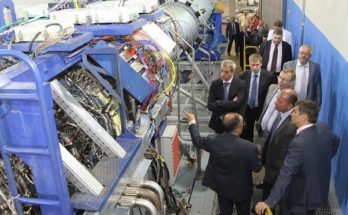Siemens‘ vast turbine portfolio is rivaled only by General Electric in the variety of machines it produces. It seems that with the downturn in the gas turbine market, which began roughly at the beginning of this decade, companies are finding ways to stay in this tumultuous game. Siemens’ answer has been to reduce its offerings from the multitude it currently has in order to maximize profitability and focus resources on research and development. Many machines, although well-proven, have been cut in order to let others survive, and some currently have questionable futures.
Siemens’ turbines that are no more:
SGT-200: The Siemens SGT-200 (formerly Siemens Tornado, and earlier Alstom Tornado) was a single-shaft/twin-shaft axial-flow industrial gas turbine machine in the 6- to 7-megawatt class.
SGT-500: The Siemens SGT-500 (formerly Siemens GT35, and earlier Alstom GT35) was a two-shaft, heavy-duty, 50/60-Hz industrial gas turbine machine in the 15- to 20-MW class.
Possibly the SGT-750: The Siemens SGT-750 is a compact, low-weight, heavy-duty, twin-shaft, axial-flow 50/60-Hz industrial gas turbine with a free turbine and hot-end drive and a power output in the 25- to 37-MW class. Although a proven machine in various installations, this turbine is waning in popularity and might fall victim to cancellation.
Furthermore, the future of the SGT-100 is in question. With Siemens’ acquisition of Rolls-Royce turbines, the company gained the Industrial 501-K (now called the SGT-A05 AE). The SGT-100 and 501-K machines have similar outputs (in the 4-7-MW range); however, they are reportedly different enough that the company might keep both in production. The SGT-100 is available for mechanical drive, for example.
The aforementioned shifts in the product line are representative of the difficult years the industry has endured. With fewer machines on offer, more resources can be focused on the major sellers.
Carter Palmer has long held a keen interest in military matters and aviation. As an analyst for Industrial & Marine Turbine Forecast, Carter specializes in examining key gas turbine programs for electrical power generation, mechanical drive, and marine propulsion applications. He is also responsible for updating the reports and analyses within the Space Systems Forecast – Launch Vehicles & Manned Platforms and Space Systems Forecast – Satellites & Spacecraft products.





